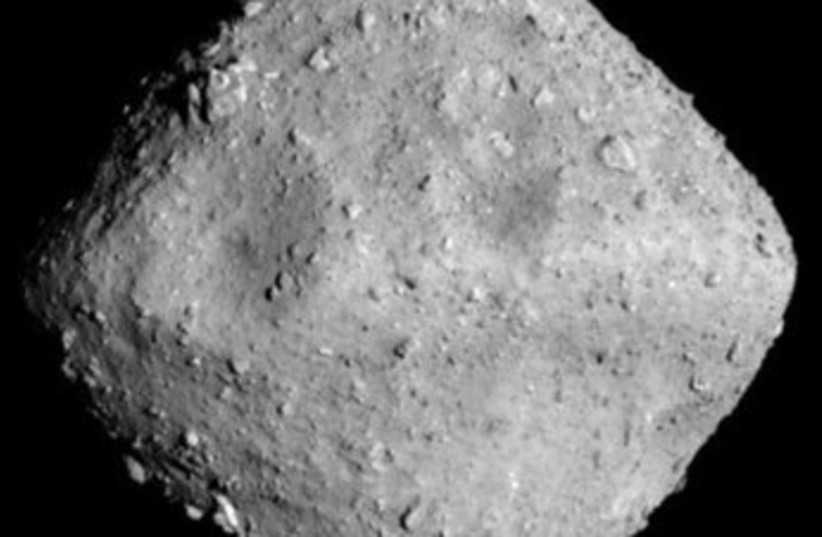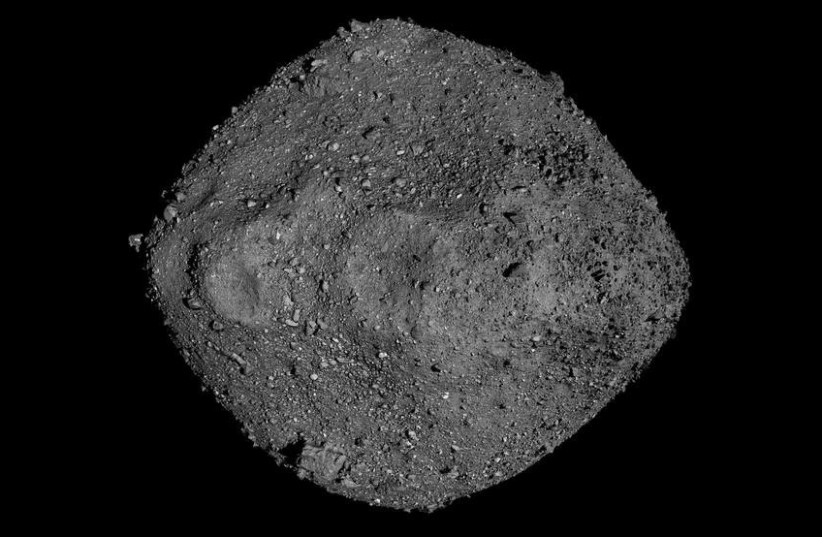Scientists may now have a better understanding of the presence of water on asteroids, as well as the overall evolution of our solar system, a new study revealed.
The findings of this study were published in the peer-reviewed academic journal Nature Astronomy by researchers from the University of Leicester in the UK.
This is the latest study to analyze the pristine sample brought back from the massive nearly one-kilometer-long asteroid 162173 Ryugu by the Hayabusa2 mission from Japan's space agency JAXA.
Asteroid Rygugu and dehydration: What is space weathering?
Ryugu is an important asteroid for a number of reasons, most notably the fact that scientists have a pristine sample of it that hasn't been tainted by Earth's atmosphere.

But another reason why it is so interesting is that Ryugu is believed to be a CI chondrite, a type of asteroid that is essentially the most chemically primitive material in the solar system.
What this means is that the Ryugu asteroid contains some of the base elements formed when the solar system was born, and is thus rife with information about the earliest days of the solar system's existence.
With that in mind, this asteroid became the subject of a large international collaboration to study some of the grains retrieved from this asteroid at the Diamond Light Source facility.
This was done by analyzing the Ryugu asteroid sample with a technique called the X-ray Absorption Near Edge Spectroscopy (XANES). This allowed the researchers to examine all the different chemical states of the different elements in the sample in order to figure out exactly what this asteroid is made out of.
This was further enhanced by the facility's electron Physical Science Imaging Centre (ePSIC), which helped the researchers study the composition at the atomic level.
So, what did the researchers find?
Ultimately, their big conclusion was that the Ryugu asteroid's surface was, in fact, dehydrated.
Now, this raises several interesting points. The first thing to note is that for something to be dehydrated, it must have at one point been hydrated, which means water.
Putting aside the fact that the Ryugu asteroid was named after a legendary undersea palace in Japanese mythology, the fact that there was water on the asteroid isn't too surprising in and of itself.
Many asteroids are known to be home to water, typically frozen. This is so common, in fact, that some experts believe that asteroid impacts are what brought water to Earth in the first place.
Others, such as asteroid expert Dr. David Polishook of Israel's Weizmann Institute of Science, have noted in the past that the presence of water on asteroids could be used as hydrogen-based fuel for spacecraft, should asteroid mining and exploration ever take off.
But where did the water go?
The researchers concluded that the dehydration was due to space weathering.
As space lacks an atmosphere, it does not have "weather" in the traditional sense. However, it does have weathering, chiefly in the form of solar wind irradiation and meteor bombardments.
Now, micrometeoroids are just small interplanetary particles of dust that crash into airless surfaces. This distinction is important because it is the lack of air that allows these dust particles to move at such incredibly high speeds.
Solar wind, however, is something different. it is a plasma made of electrons and protons that burst out of the Sun and is highly radioactive.
The fact that the Ryugu asteroid once had such water on itself may not be surprising, as will the fact that space weathering dehydrated it.
But what is interesting is that the researchers specifically tied the asteroid's outer appearance to the causal effect of dehydration. Considering the fact that there are many other asteroids with this kind of appearance, it may mean that there are many other asteroids that have been dehydrated as well.
It can also mean that since it is specifically the surface that is dehydrated that the layers underneath could be rich in water.

Consider one such asteroid similar to Ryugu, 101955 Bennu.
This large nearly 500-meter-wide asteroid was the subject of NASA's OSIRIS-REx mission, which saw a spacecraft go to collect a sample to return to Earth, much like JAXA's Hayabusa2 mission with Ryugu.
Bennu's surface has some notable similarities to Ryugu's, and it may be possible that it could contain similar information. Now, this isn't guaranteed and there could be other explanations, such as the maybe Bennu wasn't exposed to the same level of space weathering, or maybe it has something to do with the fact that the asteroid's surface actually has the consistency of a plastic ball pit.
But regardless, it does still leave open the possibility that water-rich asteroids are more common than we realized.
But that's not all.
Asteroids like this hold more than just water and minerals like iron and nickel. They can also have organic matter, specifically amino acids.
Now this isn't too surprising either – amino acids may be the building block of life but they can be synthesized from inorganic matter, and it is possible that this happened on asteroids, and some have theorized that these asteroids with amino acids could have brought them to Earth.
But the fact is that in order to make amino acids from inorganic matter, one needs water. If these asteroids have it all, it could lead to a better understanding of everything from how the solar system was formed to how life itself was able to sprout, and why on Earth specifically.
More research will be needed to figure this out, however. But with new samples coming from space to Earth, such as from Bennu or from the Moon or Mars, these answers may be here sooner than we thought.
